Sister Maureen Hopkins, SDS lets preps be preps
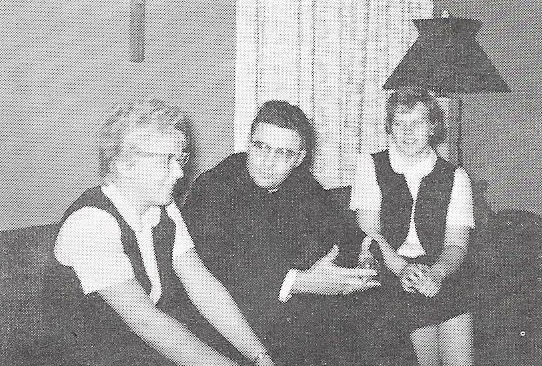
Before Sister Maureen Hopkins, SDS took on leadership of the preps, 13- to 17-year-old girls who aspired to be sisters were held to the same expectations of a professed sister. They wore ankle-length dresses and veils, and followed this tight dawn ‘til dusk schedule:
6 am: Rise in silence
Morning prayer in common
Attend Mass with professed Sisters and novices
Breakfast in silence
Study and work
Lunch in silence
Recreation
Study and work
Dinner in silence
Recreation
Bedtime
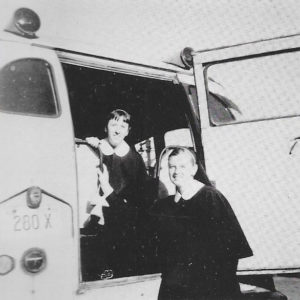
When Sr. Maureen was appointed directress of the prep school in 1951, she and Mother Speranda Vogelsang, and later Mother Demetria Lang, agreed enough is enough. Girls ages of 13 through 17 should be treated like girls, not professed sisters. Uniforms and schedules relaxed, and mealtimes were filled with boisterous laughter.
What once was a two-year preparatory program became a 4-year high school. Mother Demetria Lang, provincial at the time, remarked, “Experience has taught us that good education, being a matter of growth and development, permits no shortcuts. Four years of high school will also permit these young girls to grow up and mature more normally, being able to spend the entire summer months with their families. Since we have made this change, we also find parents more willing to permit their daughters to come at the early age of thirteen.”
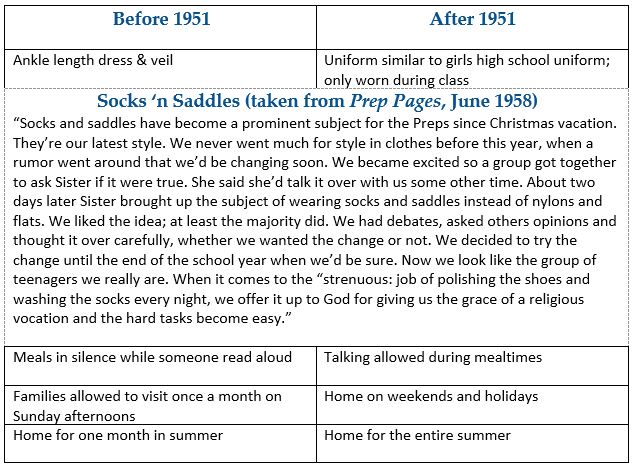
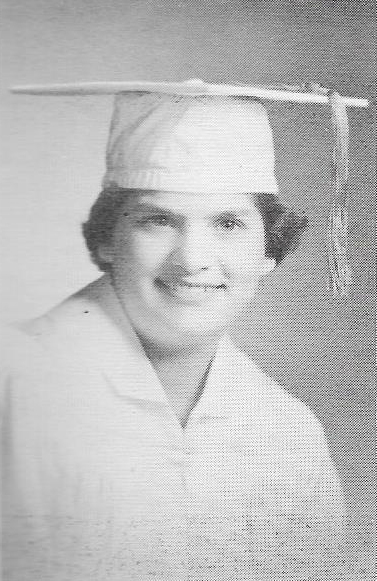
Suddenly becoming a Catholic Sister morphed into a way for girls to get an education beyond grade school. But was this a fair trade for teenage girls growing up away from home, removed from their high school peers? Many sisters agreed that these girls were too young to enter the novitiate, but no one could deny the benefits the prep school provided to the students and congregation. Young woman received a high quality education and the number of aspiring sisters increased. In 1956, 52 young women attended the prep school. Mother Demetria reported the areas from which they came: “Schofield 12; Mother of Good Counsel 8; Dickeyville 5; Divine Savior High School 3; Holy Name School 3; Sisseton 3; East Bristol 2; St. Pius 1. Twenty girls came from schools other than our own.” By 1959, 75 girls were enrolled at Divine Savior Convent High School.
Even with changes, Divine Savior Convent High School still was no ordinary school. From the 1955-1956 Student Handbook, it’s clear that some exceptions of prep students are similar to those of a “normal” high school student, and some are very different.
School Regulations (taken from the Student Handbook 1955-1956)
- The students shall keep to the right of the stairways and corridors.
- Talking and whispering shall not be permitted in the
- Libraries
- Study Hall
- Lavatories
- Corridors
- Stairways
Sister Mary Jo Stoffel, SDS recalls she once got in trouble for shouting down a hallway to get another prep’s attention. She says she definitely got an earful for breaking the rules.
- The tardy student will personally excuse herself and after the class she will explain the reason for her tardiness.
- No homework except reference shall be done in the library.
- Any joint studying will be done in a designated room with the permission of either the Mistress or the instructor of the class in which the subject has been assigned.
- Students will always cheerfully greet the Sisters and Priests.
- A cheerful greeting shall be given at all times to the instructor when entering the room for class.
- All students shall treat school property as if it were their own, mindful of the fact that they are attending Divine Savior Convent High School.
- Recess shall not be taken before the eight o’clock class period.
- It should be a matter of principle among the students that assignments should be submitted on the day appointed.
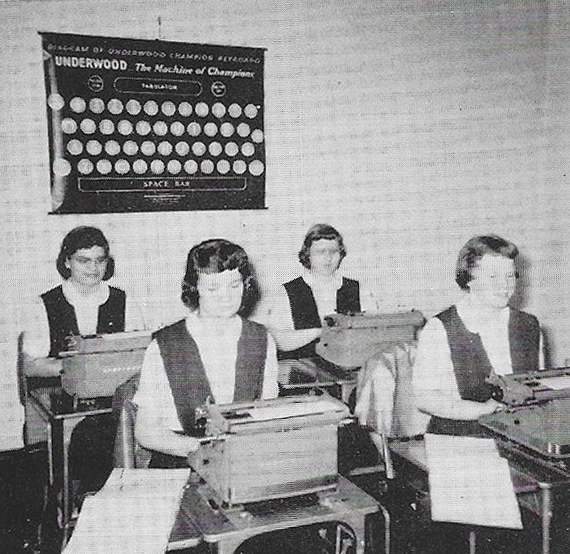
Sr. Maureen Hopkins was in charge of the prep school until 1954, and eventually became directress of postulants (1954-1960), junior sisters (1960-1961), and novices (1965-1967). Later she would be elected Provincial Superior (1972-1978) and eventually become one of the first Sponsorship Coordinators for the province.
By 1960, the prep school was less and less like a “little convent” and more like a school for healthy high school teens who were thinking of becoming sisters. The following tongue-in-cheek article from the school newspaper Prep Pages gives us a glimpse of the sense of humor that prevailed.
Ten Commandments (taken from Prep Pages, Nov. 1960, by C.J. Decker ‘62)
- Thou shalt not come to school late. (Take the whole day off)
- Thou shalt not wear scarves in school. (Shower caps are cuter)
- Thou shalt not wear thy hair in pin curls. (Rollers are neater)
- Thou shalt not butter up thy teachers. (It tastes better on bread)
- Thou shalt not run in the hall. (Sliding is more fun)
- Thou shalt not whisper in class. (Shouting draws more attention)
- Thou shalt not run downstairs. (Use the banister)
- Thou shalt not throw erasers. (Books are harder)
- Thou shalt not borrow thy neighbor’s pencil. (Try his pen)
- Thou shalt not fail any student (Let someone else put up with her next year)
Our 125 Year Celebration
As we look back on our 125th anniversary of coming to the USA, we invite you to reminisce with us. We've launched all 5 time lines with historical milestones and stories that bring to life the experiences of our sisters who came before us.
Era 1: 1895-1920
Responding to Immigrant Needs
The missionary response of hearty immigrant women religious characterizes the first 25 years of Salvatorian Sisters’ presence in the United States ...
Era 2: 1920-1950
Expanding in an “American” Church
By 1920, life for a Salvatorian Sister in the USA was radically different than it had been 25 years earlier. World War I ....
Era 3: 1950-1970
Embracing Renewal
Bob Dylan’s 1964 classic, The Times They Are A Changing, captures the high energy of this era. Change was afoot both outside and inside the Salvatorian convent walls...
Era 4: 1970-2000
Building Collaboration
Events of the mid-1960s renewed the collaborative energy that had always characterized Salvatorian life. Cloistered living ...
Era 5: 2000-2020
Searching for New Footing in a Changing World
When the new millennium arrived on January 1, 2000, Salvatorian Sisters were already five years into our second century on USA soil. Our ...
